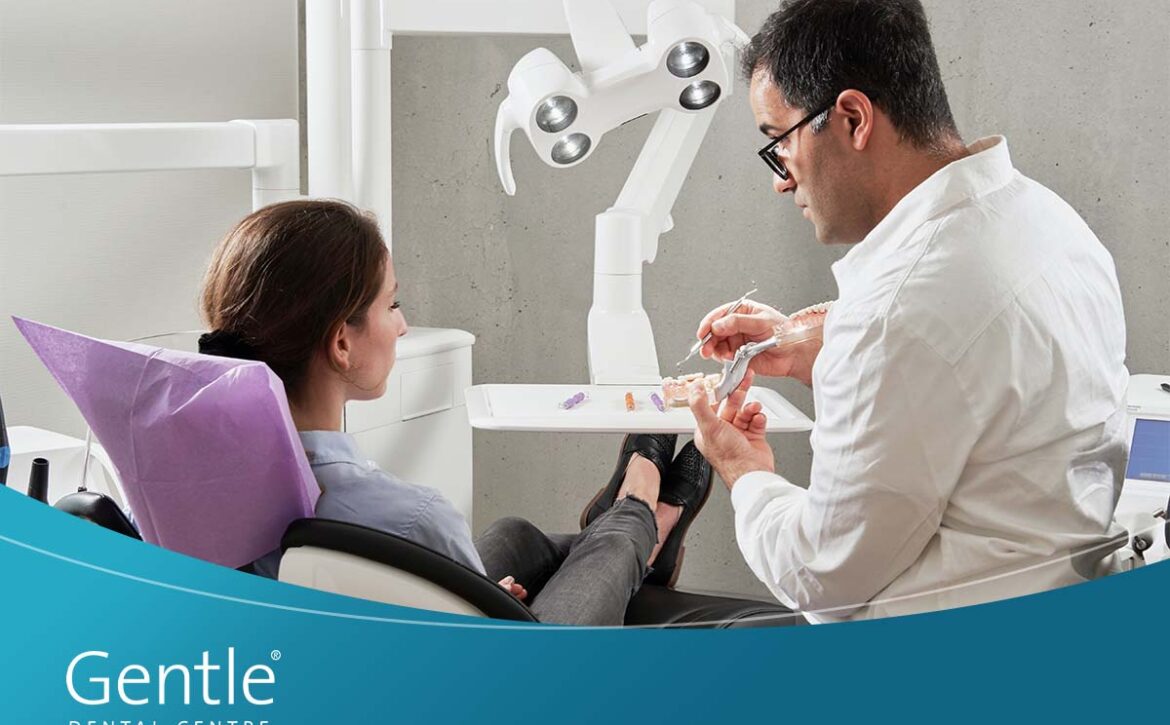What to Expect From a Root Canal Treatment
Root canals might seem scary, but the procedure is necessary for preventing infected, decayed or injured teeth from further decay and eventual extraction. Here’s what to expect from a root canal treatment.
What is a root canal?
A root canal is a treatment for removing decay from inside a tooth. Soft tissue, known as the pulp, is at the centre of a tooth. This pulp contains nerves, blood vessels and connective tissues and extends from the tooth’s crown down to the roots. The pulp is vital to the development and growth of a tooth, while the nerves are what give our teeth sensitivity to hot and cold foods.
During a root canal treatment, a dentist will remove the nerve and pulp at the tooth’s centre. The inside of the tooth is then cleaned and sealed to prevent further decay and to repair and restore the tooth.
A dentist can perform a root canal. However, if your root canal treatment is complicated, a dentist might refer you to an endodontist — a type of specialist dentist that has expertise in the treatment of dental pulp.
Why does the tooth pulp need to be removed?
Left untreated, the bacteria inside a tooth’s pulp can cause an infection or abscessed tooth. An abscess is a pocket of pus that forms at the tooth’s roots and can’t always be treated by a root canal. The infection may be so bad at this stage that the entire tooth needs to be removed.
When an infection spreads to the roots of a tooth, it can also cause:
- Swelling of the face and neck
- Bone loss near the tip of the root
Dentists generally don’t like removing teeth if they can help it. Teeth provide support and structure for one another, and extraction can leave the remaining teeth unsupported without an implant or teeth bridge to fill the gap. These procedures are also more costly than preventing tooth decay in the first place.
How do I know if I need a root canal?
There are several reasons why the pulp inside a tooth may become diseased:
- Tooth trauma, or injury
- Cracking or fracturing of the tooth
- Cavities or decay
- Repeated dental procedures
- Extreme wear and tear
- Large fillings
If you experience the following symptoms, you might need a root canal:
- Severe tooth pain when biting or chewing
- A chipped or cracked tooth
- Swelling or tenderness of the gums
- Decay or darkening of the gums
- Pimples on your gums
- Tooth sensitivity to hot or cold temperatures that lasts for longer than usual
What can I expect during a root canal treatment?
Root canal treatments can vary depending on how severely the tooth is decayed. A dentist will usually complete a root canal in one to two appointments. You may need an initial consultation followed by an appointment to remove the infected pulp. Tooth crowns are usually fitted at a second appointment. A root canal treatment typically includes the following steps
- The dentist or endodontist will take an x-ray of the tooth to see the shape of the root canals beneath the surface. The x-ray will help them determine if there are signs of infection in the surrounding bone.
- Local anaesthetic is administered to numb the tooth. A dental dam is often placed over the tooth to keep it isolated and prevent saliva from filling the tooth during the treatment.
- An opening is made in the tooth’s crown with a drill or small tool. The dentist removes the decayed tissue, pulp and bacteria from the tooth. The inside of the tooth is cleaned thoroughly, including the pulp chamber and root canals.
- The root canals are then sealed with a rubber-like compound called gutta-percha. In cases of infection, the dentist may wait a week before filling the tooth so that the root canals can be treated first. In this case, the dentist temporarily seals the tooth to keep out food debris and saliva.
- A filling is fitted to close the hole in the tooth’s crown. In some cases the patient may need a crown to restore the tooth further and prevent the tooth from breaking or cracking in the future.
What should I do after root canal treatment?
Most people experience sensitivity, pain or swelling in the treated area for the first few days, but can go back to school or work after treatment.
Here are some things you can do to help recover after a root canal:
- Eat soft foods that don’t require much chewing
- Avoid hard foods or hot foods as these can hurt your teeth
- Listen to any advice from your dentist
- Wait until the numbness has worn off before you eat
- Try to avoid chewing with the affected tooth until your procedure is completed
- Brush, floss and use an antiseptic mouthwash regularly
Root canal treatment is highly successful, with tooth survival rates of 97%. After the tooth has healed, it will function as it usually does. To ensure the success of your treatment, talk to your dentist about after-care solutions and whether you need a follow-up appointment in the weeks following the root canal.
Scheduling regular dental checkups is the best way to maintain tooth health and prevent tooth decay from becoming an infection or abscess. If you are experiencing tooth pain or discomfort, contact the friendly team at the Gentle Dental Centre to book an initial assessment.

